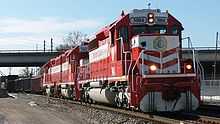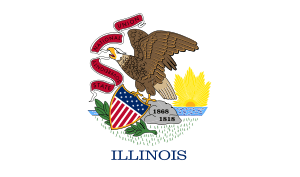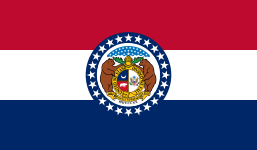Terminal Railroad Association of St. Louis

The Terminal Railroad Association of St. Louis (reporting mark TRRA) is a switching and terminal railroad owned by railroads in St. Louis, Missouri which handles traffic through its metropolitan area.
Components
It was founded in 1889 in a deal orchestrated by Jay Gould by:
- Missouri Pacific Railroad
- St. Louis, Iron Mountain and Southern Railway
- Wabash Railroad
- Ohio and Mississippi Railroad
- Louisville and Nashville Railroad
- Cleveland, Cincinnati, Chicago and St. Louis Railway
Its current owners are:
- BNSF Railway (1/7)
- Canadian National Railway (1/7) (Illinois Central Railroad until 1999)
- CSX Transportation (1/7)
- Norfolk Southern Railway (1/7)
- Union Pacific Railroad (3/7)
It also connects with the Kansas City Southern Railway; the Canadian Pacific Railway is the only Class I railroad that does not reach St. Louis.
History
The railroad's predecessor companies in St. Louis date to 1797 when St. Louis was still part of Spanish Upper Louisiana. James Piggott was granted a license to operate a ferry between St. Louis and Illinoistown (now East St. Louis). Piggott's heirs sold the ferry to Samuel Wiggins in 1819. Wiggins bought 800 acres (3.2 km2) in East St. Louis including Bloody Island. Wiggins used a team of eight horses to propel the ferries. In 1828 he began steam-power ferry service across the river.
In 1832 Wiggins sold his company and the new owners called the new company the Wiggins Ferry Service which would develop the Wiggins property as a rail yard. In 1870 the ferry began porting rail cars across the river one car at a time until the construction of the Eads Bridge.[1]
When the Terminal Railroad was incorporated in 1889, railroads owned most of the Wiggins Ferry property. In 1902 when the Rock Island Line joined the Terminal Railroad, the ownership of the Wiggins Illinois property was complete.[2]
The Association built Union Station. It owns the Merchants Bridge and MacArthur Bridge, the latter which it received in 1989 in a swap with the City of St. Louis in exchange of title for the Eads Bridge.
In the early years the Association was at odds with the St. Louis Merchants Exchange. The Exchange built the Eads Bridge but lost control to the Terminal Railroad. The Exchange then built the Merchants Bridge to keep the Terminal Railroad from having a monopoly. The Exchange then lost control of that bridge also to the Terminal Railroad.
The railroad's practice of charging a tariff to coal trains crossing the Mississippi River would result in several industries locating in Illinois rather than Missouri. The steelmaking town of Granite City, Illinois was founded to avoid the tariffs..[3]
Awards and recognition
For four consecutive years beginning in 2001, TRRA was the recipient of the Gold E. H. Harriman Award for safety in the Switching and Terminal railroad class.[4]
Lines

The TRRA operates the following lines:
- Merchants Subdivision: Grand Avenue (BNSF/UP) via Union Station, Gratiot Street (UP), Poplar Street (UP), North Market Street (BNSF/NS), West Approach, Merchants Bridge, and "SH" to "WR" (KCS/NS/UP/Port Harbor Railroad)
- Illinois Transfer Subdivision: "SH" via "CP" (NS), Willows (CSX/KCS), and Southern (NS) to Valley Junction (KCS/UP)
- MacArthur Bridge Subdivision: Gratiot Street (UP) via South Approach Junction (UP), MacArthur Bridge, North Approach Junction, and East Approach (Alton and Southern Railway) to Valley Junction (KCS/UP)
- North Belt Subdivision: West Approach via May Street (NS) and Carrie Avenue to Baden Yard (BNSF)
- West Belt Subdivision: Carrie Avenue to Rock Island Junction (Central Midland Railway)
- Eads Subdivision: North Approach Junction via "Q" (CSX/KCS/UP) to "CP"
References
- ↑ http://www.terminalrailroad.com/history2.php
- ↑ http://www.terminalrailroad.com/history3.php
- ↑ Made in USA: East St. Louis by Andrew J. Theising - Virginia Publishing (June 2003) ISBN 1-891442-21-X
- ↑ Association of American Railroads (reprinted by Norfolk Southern Railway) (2006-05-16). "Railroads Set Another Employee Safety Record in 2005". Retrieved 2006-05-24.
External links
| |||||||||||||||||||||||||
| |||||||||||||||||||||||||
| ||||||||||||||||||||||

